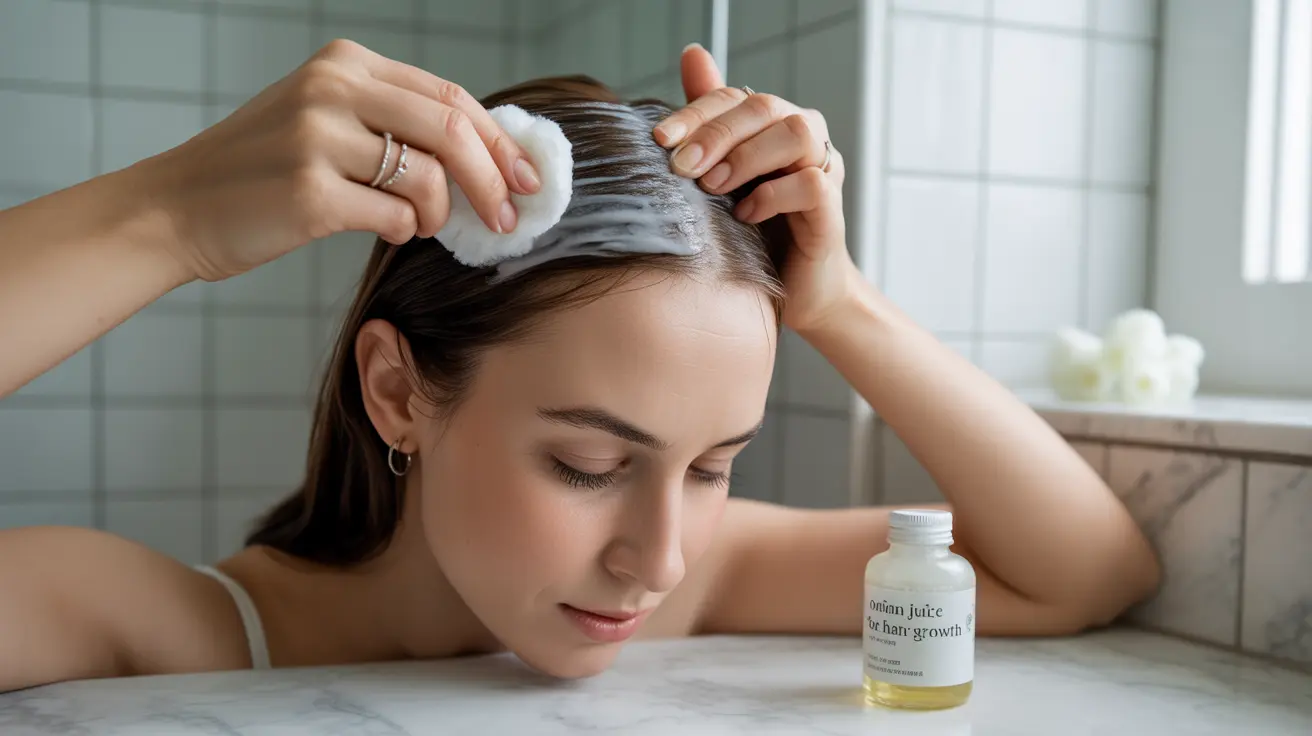If you're seeking natural solutions for hair growth, onion juice might be the answer you've been looking for. This potent natural remedy has gained significant attention in recent years for its potential to promote healthy hair growth and combat various forms of hair loss. Understanding how onion juice works and how to use it effectively can help you achieve better results in your hair care journey.
In this comprehensive guide, we'll explore the science behind onion juice for hair growth, proper application methods, and what you can realistically expect from this natural treatment.
How Onion Juice Promotes Hair Growth
Onions are rich in sulfur compounds, particularly allicin, which plays a crucial role in hair growth. These compounds help improve blood circulation to the scalp and provide essential nutrients to hair follicles. Additionally, onions contain powerful antioxidants that can protect your scalp from oxidative stress and inflammation.
The antimicrobial properties of onion juice also help maintain a healthy scalp environment, which is essential for optimal hair growth. By reducing scalp infections and inflammation, onion juice creates favorable conditions for new hair growth.
Preparation Methods for Maximum Benefits
Fresh Onion Juice Extraction
The most effective way to prepare onion juice for hair treatment involves these steps:
- Peel and chop 1-2 medium-sized onions
- Blend until smooth or grate finely
- Strain through a clean cloth or fine strainer
- Collect the pure juice in a clean container
Enhanced Onion Juice Treatments
To maximize benefits and improve the application experience, you can combine onion juice with other natural ingredients:
- Mix with coconut oil for added nourishment
- Combine with aloe vera gel to reduce scalp irritation
- Add honey for its moisturizing properties
- Blend with essential oils to mask the smell
Proper Application Techniques
For optimal results, follow these application guidelines:
- Part your hair into sections
- Apply the juice directly to your scalp using a cotton ball
- Gently massage for 5-10 minutes
- Leave on for 30-60 minutes
- Wash thoroughly with a mild shampoo
What to Expect and Safety Considerations
While onion juice can be effective for hair growth, it's important to understand both its benefits and potential drawbacks. Results typically vary among individuals, and consistency in application is key for seeing noticeable improvements.
Common Side Effects to Watch For
Some people may experience:
- Temporary scalp irritation
- Strong onion smell in hair
- Redness or itching
- Burning sensation
Frequently Asked Questions
Does applying onion juice really help with hair growth and how does it work? Yes, onion juice can help with hair growth through its sulfur compounds, which improve blood circulation to the scalp and provide nutrients to hair follicles. The antibacterial properties also help maintain a healthy scalp environment conducive to hair growth.
What are the best methods to use onion juice on the scalp for hair growth? The best method is to extract fresh onion juice by blending or grating onions and straining the juice. Apply directly to the scalp, massage gently, leave for 30-60 minutes, then wash with mild shampoo. You can also mix it with coconut oil or aloe vera for enhanced benefits.
Are there any side effects or risks of using onion juice on hair and scalp? While generally safe, some people may experience scalp irritation, redness, or burning sensation. The strong smell can also be a concern. It's recommended to do a patch test before full application and discontinue use if irritation occurs.
Can onion juice treat specific types of hair loss like alopecia areata? Research suggests onion juice may be beneficial for some types of hair loss, including alopecia areata, due to its anti-inflammatory and circulation-boosting properties. However, results can vary, and it's best to consult with a healthcare provider for severe hair loss.
How long does it take to see results from using onion juice for hair growth? Most people start noticing results after 4-6 weeks of consistent use, with more significant results appearing after 2-3 months. Regular application 2-3 times per week is typically recommended for best results.




